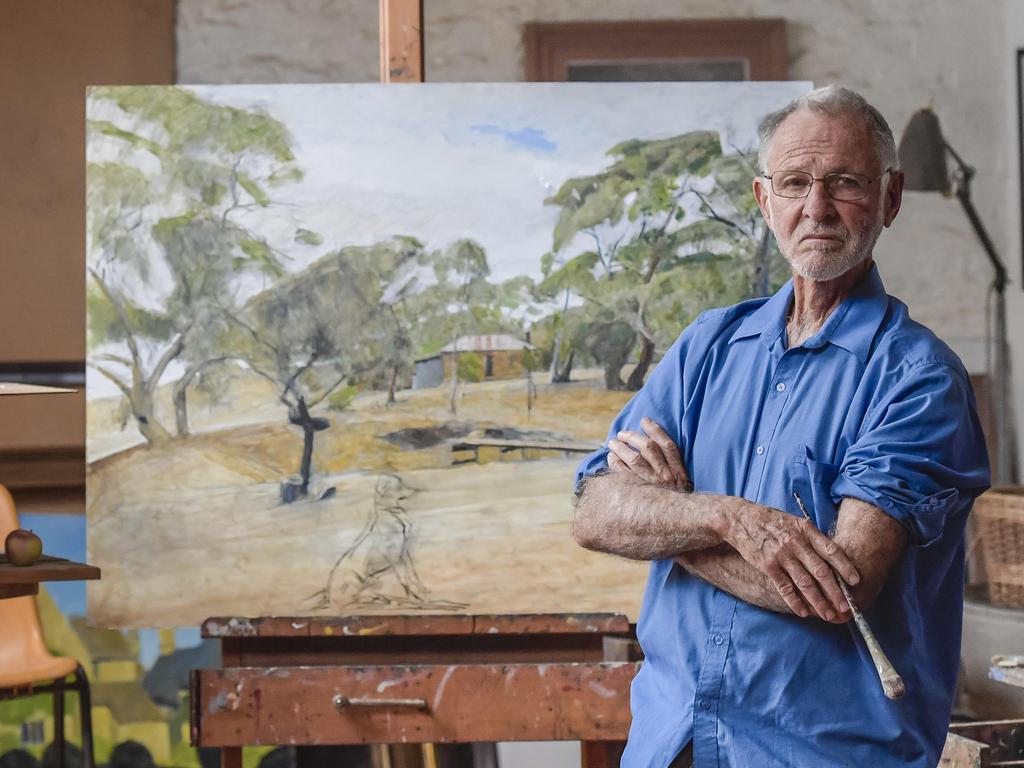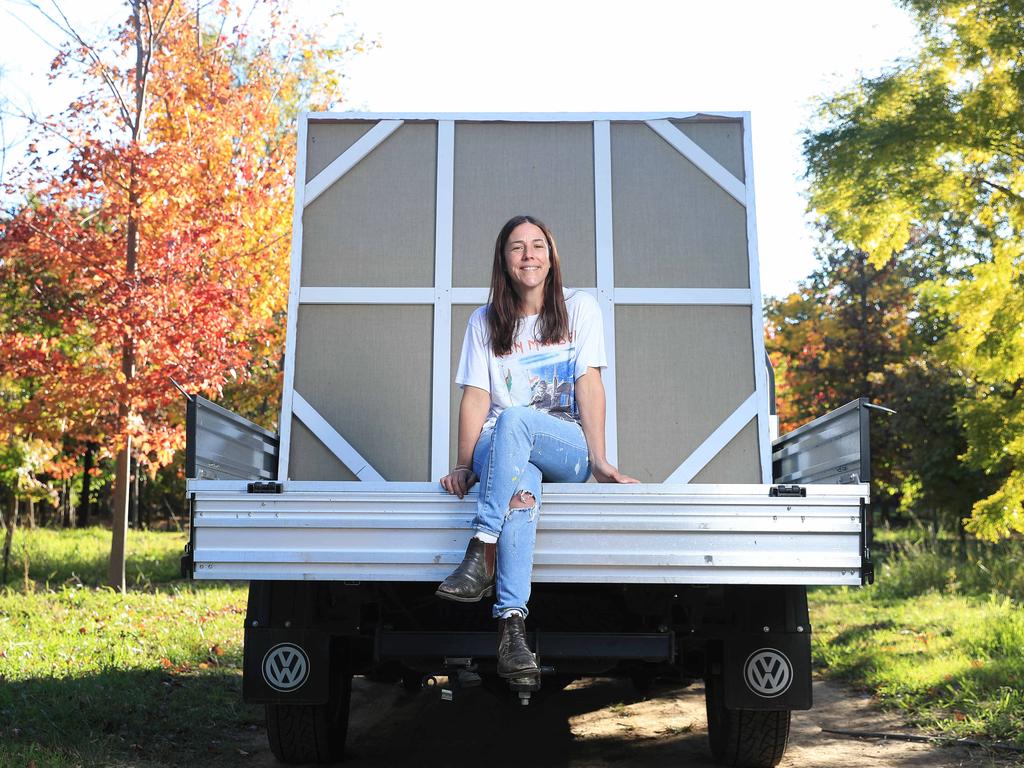Archibald Prize 2021: Peter Wegner captures Guy Warren in a striking painting
The 100th Archibald Prize for portraiture has a clear best picture.

The Archibald Prize for portraiture celebrates its centenary this year, an occasion that will be marked by a survey exhibition opening at the Art Gallery of NSW in Sydney next month.
But even before seeing that show, it is clear the prize was established in a world very different from our own and with aims and criteria far removed from those that prevail today.
In 1922, the Australian federation was only two decades old and had just survived the ordeal of World War I. Australia had entered the conflict effectively as part of the British Empire but emerged as a recognised middle power that had asserted its place in the world. There was a sense of optimism, confidence and ambition for the future of the country.
When JF Archibald (1856-1919) left money to fund an annual portrait prize – as well as a sum to build the Archibald Fountain in Sydney’s Hyde Park – he wanted to celebrate the achievement of those who had contributed and would continue to contribute to the growth of our nation and its culture. The prize was to be awarded to “the best portrait, preferentially of some man or woman distinguished in art, letters, science or politics, painted by any artist resident in Australasia”.
Archibald’s portrait prize was thus intended to contribute to the self-confidence, self-awareness and patriotic pride of an increasingly independent people; he was himself a republican.
A century later, the sense of patriotism still lives in the hearts of many Australians, but among the educated and wealthier classes it has been eroded by an uncomfortable combination of self-interested materialism and moral anxiety. National pride has been replaced by hypocritical rituals of apology, the old Australian frankness by a culture of self-censorship.
As for men and women “distinguished in art, letters, science or politics”, this has become less important than media visibility and notoriety, and the degree of achievement has been subordinated to what is now called diversity.
If you add to that the implicit requirement to assemble a group of pictures that forms the most extreme stylistic contrasts and that includes works viewers will find shocking in one way or another, you understand why the Archibald inevitably turns out the way it does.
The 52 portraits selected as finalists for this year’s Archibald were revealed at the gallery on Thursday.
The best picture is clearly Peter Wegner’s portrait of Guy Warren, the veteran painter who recently turned 100 and who has marked the occasion with several exhibitions. Wegner has been interested in centenarians for years. In Warren he has found a wonderful subject, whom he captures in a striking painting that is simply but effectively composed, with a characteristic pose and lively, curious eyes.

It is rare for the best picture in the Archibald to win the prize: so many extraneous factors count for more in the eyes of the gallery trustees, from the identity of the sitter to the style of the painting.
A baneful culture of controversy has developed around the Archibald Prize, so that the media has come to expect the individual represented or the form of the work will provoke indignation and public squabbling.
On this occasion, however, the portrait of Warren is not only the best portrait in the show but also may be the most plausible candidate to win because the sitter is a much-loved and esteemed elder artist.
And looking around the usual dull collection of disparate pictures, alternating between the bland, the would-be clever and the provocatively crude, there doesn’t seem to be any other obvious choice.
I was unsure who might win the Packing Room Prize, as the most prominent example this year of the kitsch manner that the packers seem to favour was probably too effete for their tastes. It even crossed my mind that they might end up falling back on the Wegner portrait but, as it happens, they settled on a popular singer painted in a particularly horrible commercial style.
Among the creditable pictures in the exhibition are Tsering Hannaford’s portrait of Margaret Beazley and Lucy Culliton’s self-portrait, although Culliton’s brown palette is rather congested.
Dagmar Cyrulla’s painting of Wendy Sharpe combines a sensitive likeness with a pose that is typical of its subject – making the difference between Cyrulla’s cool palette and paint handling with those of her sitter all the more striking.
Pat Hoffie’s portrait of her daughter Visaya recovering from a terrible accident is intense and moving, even if one is not aware of the story behind the painting.
Matthew Kentmann catches a glimpse of Leslie Rice in a tenebristic mode that recalls Rice’s own paintings.
But two pictures that particularly draw the viewer with their intimate authenticity, inviting us to look more closely, are both tiny.
Graeme Drendel’s portrait of Jill Orr is contained but full of quizzical life, set asymmetrically in the composition and glancing obliquely at the viewer.
Tom Carment’s portrait of Mara Schwerdtfeger, in contrast, does not confront us but offers us a glimpse into the inner life of the sitter, caught in a moment of reading and absorption.






To join the conversation, please log in. Don't have an account? Register
Join the conversation, you are commenting as Logout